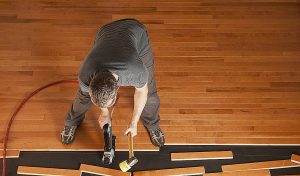
For countless individuals, the relentless ache in knees, hips, or the spine transforms simple tasks into challenging endeavors, prompting a search for lasting relief. When conservative methods fail to restore comfort, medical teams may recommend replacement disc surgery to tackle severe spinal degeneration head-on. Such a decision often follows months of physical therapy and medication, as patients strive to reclaim lost mobility and everyday function. Recognizing that joint pain can stem from a complex interplay of structural wear, nutritional factors, and lifestyle stresses is the first step toward uncovering a treatment strategy that aligns with each person’s unique needs.
Causes and Early Warning Signs of Joint Degeneration
Joint degeneration unfolds gradually, its early signs often dismissed as temporary soreness after exercise or a long day at work. Yet underlying arthritis and cartilage breakdown can silently chip away at joint integrity, leading to persistent pain, stiffness, and reduced range of movement. Over time, individuals may notice clicking or grinding sensations as protective cartilage thins, exposing raw bone surfaces that trigger both local inflammation and heightened sensitivity. Identifying these warning signs promptly allows for interventions—such as targeted strengthening routines and dietary adjustments—that slow deterioration and preserve joint health.
Non-Surgical Interventions
Before exploring surgical paths, many patients find relief through a combination of physical training, activity modification, and adjunct treatments like cortisone shots or hyaluronic acid injections. Therapeutic exercise programs focus on reinforcing supportive muscles around affected joints, improving stability, and promoting healthier movement patterns. Meanwhile, nutritionists emphasize anti-inflammatory diets rich in omega-3 fatty acids and antioxidants, aiming to reduce systemic swelling. When pain persists, targeted injections help lubricate joints and dampen inflammation, buying valuable time before more invasive options become necessary.
At its core, replacement disc surgery replaces degenerated intervertebral discs with synthetic implants that mimic the natural shape and function of spinal cushions. The procedure begins with an anterior or posterior approach, depending on which segments demand attention. Surgeons carefully remove the damaged disc material, ensuring that surrounding nerves and soft tissues remain unharmed. Then, they insert a prosthetic disc crafted from biocompatible materials designed to replicate the shock-absorbing qualities of healthy cartilage. By restoring height between vertebrae, this surgery eases pressure on nerve roots, alleviating radiating pain and returning a degree of flexibility that traditional fusions cannot match.
For those whose hip joints reach an irreversible stage of damage, hip replacement surgery Woodbridge can prove transformative, renewing both mobility and quality of life. Osteoarthritis, traumatic fractures, or developmental dysplasia often degrade the hip socket to a point where pain radiates from the groin to the thigh, rendering even short walks excruciating. During the procedure, orthopedic surgeons remove the worn femoral head and damaged acetabular surface, substituting them with precisely engineered prosthetic components. These implants, meticulously matched to each patient’s anatomy, restore alignment and enable smooth, near-natural movement. After surgery, patients typically progress from assisted walking devices to unrestricted ambulation in just a matter of months, allowing them to return to cherished hobbies and simple pleasures once more.
Innovations in Minimally Invasive Joint Surgery
Advances in surgical techniques have led to less invasive approaches for both spinal and hip interventions, minimizing soft tissue damage and reducing recovery times. Robotic-assisted platforms guide surgeons to execute precise bone cuts and implant placements, while endoscopic cameras allow for smaller incisions and clear visualization of internal structures. For hip replacements, direct anterior approaches spare major muscles, enabling more rapid return to weight-bearing activities. These innovations underscore the medical community’s commitment to balancing efficacy with patient comfort, as individuals face less postoperative pain and encounter lower risks of complications associated with larger incisions.
Selecting the Right Surgical Path
Deciding between various orthopedic options requires a candid evaluation of symptom severity, activity demands, and long-term expectations. Patients with localized single-level spinal issues often find that artificial disc replacements deliver superior outcomes compared to fusion, preserving both motion and reducing stress on adjacent vertebrae. Conversely, extensive multi-level degeneration may necessitate combination procedures or alternative strategies. Similarly, younger, more active hip patients may favor ceramic-on-ceramic implants that exhibit high wear resistance, while older individuals benefit from more forgiving materials that minimize fracture risk. By engaging in thorough consultations and seeking second opinions when needed, patients ensure that their chosen path aligns with both current health and future aspirations.
The Importance of Surgeon Expertise and Facility Accreditation
Selecting surgeons with demonstrated expertise in complex joint procedures stands as a pivotal factor in achieving optimal outcomes. Board certifications, fellowship training in spinal or hip reconstruction, and high procedural volumes translate directly to lower complication rates and superior long-term function. Moreover, undergoing surgery at accredited centers with dedicated orthopedic wings ensures access to advanced imaging, specialized nursing staff, and infection control protocols that significantly reduce risks. Patients who visit such facilities discover comprehensive support, from streamlined scheduling to transparent billing practices, easing the stress of major surgical interventions and reinforcing their decision to prioritize quality.
Charting the Path Forward: Advancements on the Horizon
The future of orthopedics shines bright with potential breakthroughs, as researchers explore biocompatible materials that more closely mimic natural cartilage and bone. Innovations such as tissue engineering—where lab-grown cartilage plugs replace degraded joint surfaces—promise to eliminate the need for metal and plastic implants altogether. Meanwhile, next-generation robotic systems, guided by artificial intelligence, refine implant placement to near-perfect alignment, reducing wear and extending prosthetic lifespan. Personalized medicine delivers patient-specific rehab regimens, leveraging wearable sensors to monitor gait patterns and joint loads in real time, ensuring each stage of recovery remains on track.
Embracing Long-Term Joint Wellness
Ultimately, achieving lasting relief from debilitating joint pain hinges on combining surgical excellence with lifestyle stewardship and comprehensive support systems. From hip replacement surgery that liberates patients from years of limping to targeted disc replacements that restore spinal balance, the spectrum of available treatments has never been broader or more sophisticated. Postoperative discipline involves dedicated home exercises, periodic clinic visits, and steady progression back to activities that foster mental and physical health. Regular check-ins with orthopedic teams help catch subtle changes early, ensuring that each individual’s new joint maintains its durability and continues to serve them faithfully.
Final Thoughts
As individuals prepare to take bold strides toward renewed mobility, forging trust with shoulder surgeons Woodbridge and their orthopedic colleagues becomes a cornerstone of success. These specialists combine decades of focused experience with cutting-edge techniques to deliver not just immediate pain relief but sustained restoration of function and quality of life. The journey from chronic discomfort to dynamic well-being intertwines surgical skill, patient resilience, and ongoing education, setting the stage for individuals to reclaim activities they once thought lost. With each step forward, confidence rebuilds, and the world of movement appears boundless once more.











